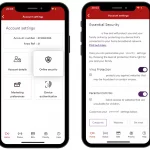Starlink Broadband Introduce 1000GB Fair Usage Policy in Some Markets

Customers of global ISP Starlink (SpaceX), which operates a mega constellation of Low Earth Orbit (LEO) based ultrafast broadband satellites, have been informed that they will become subject to a 1000GB (1 TeraByte) data cap from December via a new Fair Usage Policy (FUP). But it hasn’t been confirmed for the UK.. yet.
The Starlink network currently has around 3,270 LEO satellites in orbit around the Earth (altitude of c. 550 kilometres) and their initial plan is to deploy a total of 4,425 by 2024. Customers in the UK normally pay from £75 per month and £460 for the regular home kit (standard dish, router etc.). But for that you can currently expect unlimited usage, fast latency times of 20-40ms, advertised downloads of c. 50-200Mbps and uploads of c.10-20Mbps (speeds may change as the network grows).
So far, the service has proven to be extremely popular because of both its performance and the allowance for “unlimited” usage, although such networks are incredibly expensive to deploy and turning a profit can be extremely difficult. Suffice to say, it’s long been anticipated that something would have to change in order for Starlink to become a sustainable venture (example).
Advertisement
The options for resolving this imbalance tend to be limited and are often unpopular. You could increase the service price, but Starlink is already expensive, and they’ve actually surprised us by cutting prices in recent months. The alternative is to adjust the service itself, such as by slowing speeds (e.g. traffic management or by oversubscribing the capacity) or imposing other restrictions on data usage.
In recent months, we’ve seen Starlink’s performance fall away (here) as the realities of network contention begin to creep in (i.e. the rise in the number of customers sharing a limited amount of capacity), but there remained a question mark over how much the operator would allow performance to fall before it stepped in.
The New Fair Usage Policy (FUP)
By the looks of it, Starlink has now proposed to take action – starting in the USA and Canada – by introducing a new Fair Usage Policy (FUP). In simple terms, this will impose a soft “Priority Access” cap of 1TB (1000GB) per month on data usage on their standard packages, which is enough for most people (e.g. last year Ofcom said that the average UK fixed broadband customer gobbled 453GB a month), but it will impede heavier users.
However, there’s a bit more to this than meets the eye, since Priority Access data only reflects usage that occurs between the “peak” hours of 7am to 11pm (daytime in the USA) – this data usage is given preference in Starlink’s network for the best speeds. In other words, outside this period, your usage will NOT count toward the Priority Access data limit.
Advertisement
Customers that gobble up all of their Priority data allowance will face slower speeds during the peak 7am to 11pm period, or alternatively they’ll be able to buy more Priority Access data at $0.25 per GB (GigaByte) and consume that at full speed during the same period.
Extract from the FUP
RESIDENTIAL SERVICES
➤ Priority Access.
Each Service Plan is allocated a certain amount data for “Priority Access” each month. Priority Access data is given precedent over the “Basic Access” data in the Starlink network. See Starlink Specifications for details on Starlink expected performance per Service Plan. After your Priority Access is exhausted, you will continue to have an unlimited amount of Basic Access for the remainder of your billing cycle.
➤ Peak Hours Usage.
For Residential Service Plans, your data usage will only count toward the Priority Access data limits described in the chart below during 7AM to 11PM (“Peak Hours”). Your usage between 11PM and 7AM will not count toward Priority Access data limits.
➤ Basic Access Impact.
In times of network congestion, users with Basic Access may experience slower speeds and reduced performance compared to Priority Access, which may result in degradation or unavailability of certain third-party services or applications. Bandwidth intensive applications, such as streaming videos, are most likely to be impacted. Importantly, in areas that are uncongested or at times of low usage, users should not notice any difference in performance between Priority and Basic Access during normal use.
➤ Tracking Data Use & Purchasing More Priority Access.
You can track your monthly data usage and purchase additional Priority Access at any time via the Starlink App and on the Starlink Customer Portal by opting into to being automatically charged for more Priority Access if you hit your data limit. Once you opt-in, you will be automatically billed for additional GB used until you opt-out, including in following billing cycles. You may opt-out of purchasing additional Priority Access at any time in the Starlink Customer Portal. Data usage per month will also be displaced on your monthly invoice.
At present the new FUP has not been introduced for the UK and if it that changes in the future then, under the rules of the Advertising Standards Authority (ASA), there’s a good chance that Starlink would no longer be allowed to continue promoting itself as an “unlimited” product, such as if any FUP restrictions (e.g. going over the 1TB cap) result in a more than modest loss of speed. The ASA has previously been quite strict on this.
We should point out that Starlink’s challenges are fairly common in the satellite communications sector. As we said earlier, launching new broadband satellites is a ridiculously expensive business, regardless of whether they’re compact LEOs or individual double-decker bus sized GEO / GSO spacecraft in a significantly higher orbit.
The fact that Starlink has, until now, managed to largely buck the trend of data restrictions or reduced speeds does not make them immune to economic reality. Businesses need to turn a profit, and the way Starlink was originally operating would have struggled to do that. But there are differences in demand, regulations and deployment between countries, so it’s possible that the model they eventually adopt in the UK may yet differ.
Advertisement
PS – I meant to write this up yesterday afternoon, but I was otherwise indisposed and “enjoying” the wonders of general anaesthesia. Sorry for the delay.
Mark is a professional technology writer, IT consultant and computer engineer from Dorset (England), he also founded ISPreview in 1999 and enjoys analysing the latest telecoms and broadband developments. Find me on X (Twitter), Mastodon, Facebook, BlueSky, Threads.net and Linkedin.
« UK ISPs Set to Miss Ofcom’s Broadband Switching Deadline























































It’s been surprising to me how many people seem to want (and presumably need) to get their internet via Starlink in heavily contended urban areas.
I wonder if in those areas, Starlink should actually get an agreement with a fibre network, so that many customers can be provisioned with the Starlink purely as a automatic backup. The service is expensive enough to easily cover the cost, I’d have thought!
Like the Relish offer thriving in London, this heresy is just the consequence of poor FTTH deployment policies compared to other European countries.
Look at France, look at Spain. FTTH is the norm there thanks to effective and forward thinking deployment regulations. Meanwhile in 2022 in most UK cities, one has to stick to an anaemic DSL access, or fallback to a radio-based access normally designed for rural outposts.
Has Starlink really been so in demand in our urban areas given over half the country, mostly urban areas, have cable?
Think Broadband stats do not support the suggestion that all or most city dwellers have no options besides DSL. According to their stats: https://www.thinkbroadband.com/news/9343-project-gigabit-tracking-highlights-rural-divide over 83% of those in urban areas may order gigabit services.
UK is certainly still well behind much of the EU27 and EU39 but closing the gap, finally.
Pretty sure no-one would consider Starlink in “heavily contended urban areas”. Have nothing against Starlink but its really a last resort option.
This sounds very fair to me. It is not a cap. If you exceed 1TB in a month then you can continue using it, except your remaining data usage will be given lower priority, so as not to affect other less greedy consumers.
Unlike FTTP, Starlink has inherent limits from the RF spectrum allocated to it, so it’s essential that they share it wisely.
The most interesting aspect to me, was that the FUP only applies during peak hours, which means that heavy data users that are sensible, should be able to just schedule their large downloads/uploads for the off-peak hours, thereby avoiding consumption of their allowance.
These kind of policies, which incentivise efficient use of the service by the users, are the best way to go about managing contention, in my opinion.
yeah – just like the likes of Plusnet were doing in 2002.
I am so glad I am out of the “contended, worry about overnight downloads” era!
I had a peak hours data restriction many years ago, so long ago I cannot remember who it was with but it was easily managed so downloads were overnight and did not use any allowance.
And there it is, the first plusnet mention. Knew it was hear as soon as I read the headline. #BadBoyPipe
Here*
PlusNet*
Sorry they were the only ones I could think of who did it.
My bad
Analysis of Starlink
https://youtu.be/zaUCDZ9d09Y?t=969
As a family our highest usage in one month was 657.319 GB, we are heavy users, I think its reasonable às rural locations need connectivity, if your consuming huge amounts of data then go hard wired.
I think this is an acceptable limit, but:
1. Your “heavy usage” is different from others. Eg: My family uses more than yours.
2. If you have a good wired alternative suitable for heavy usage, you wouldn’t use satellite/wireless internet in the first place.
Ouch, 1TB in todays things is nothing. A few game updates (esp Call of Duty)
I am sorry, I don’t think games should take precedence over rural Locations getting satellite connectivity, for some is now essentiall.
How about let the market decide? Gamers should not be punished for someone trying to live off the grid 20km away from nearest village
Not sure how the size of game downloads impacts the availability of Starlink? Might impact uptake and customer satisfaction but can’t see why it would be prioritised over rollout. If rural areas have better options they’ll take them and if they don’t they’re stuck with Starlink or preferring unlimited, slower services.
Maybe patch in the over night? If possible. Don’t play the game on the day of release, and switch on the console at 11pm, let it patch at leisure. They is normally warning of when big patches are coming.
Imagine that an expensive satellite internet service with data caps, who could ever have seen this coming, except everyone who used, operated or knew anything at all about Satellite comms.
No doubt someone will be along shortly to tell us all again how it’s the solution for rural and FTTP subsidy/investment is a waste of money for the likes of us.
I hope you’re recovering well after your operation.
Starlink is the way of the future. This message was sent to you via a starlink connection. 🙂
I prefer mine going down fibre 🙂
Slower (than FTTP), more expensive, higher latency connections are “the way of the future” eh? sounds pretty dystopian to me.
@Doubleplusgood, all of what you said and add in the waste factor of deorbiting and replacing short life cycle LEO sats.
this message was sent to you on an FTTC line at a fraction of the cost, has lower latency, consistent performance, and no data cap. Oh, and a real IPv4 address.
Not funding a certain megalomaniac has its perks too.
Satellite based solutions are not replacements for fibre or fast FTTC, so I don’t understand some of the comments here. Starlink is not better than fibre and fibre/fast fixed connections are not available everywhere.
because OP claimed it was “the future”. It’s not, and it never should be. Especially in the UK where population density and spread means virtually everyone should be able to get a fixed line service in time.
In the good times, starlink fans loved to post their speed tests showing speeds that are nominally much higher than you’d ever get on FTTC. Now the tables have turned and it’s time to remind them of what constitutes a real internet service.
I think I’d still have the FTTC service – even if it’s at the low end due to line length – than to pay many times more for starlink. Surprised that the more ‘nimble’ ISPs haven’t looked at bonding for that sort of user.
Having just seen this article and being a UK Starlink user, I’m pleased to see it doesn’t affect us, yet!
I do note however, that when I log into my account on the Starlink website, my data usage is now displayed on there. It’s broken down into the 0700-2300 peak and the remaining off-peak times, it wasn’t there a couple weeks ago. So this could suggest it’s only a matter of time now.
Given that the UK MNO market is (for the current moment in time) going for data + uncapped speed vs. more data + capped speed for the same price, and that makes sense even when using RF in smallish cells, this isn’t that surprising. It’s basically a hybrid of those two models and seems reasonably fair.
What a lack of Priority Access(TM ?!) means in reality will be interesting though!
Have recently cancelled my Starlink sub, the performance has been dropping away noticably to the point it wasn’t worth having vs my 35/6 FTTC considering the latency difference and the relatively huge cost in these troubled times!
My FTTC does suffer from occasional blips but I’ve got a 1p mobile sim in my Vigor2862 running as backup which I could “boost” in the event of any prolonged outage